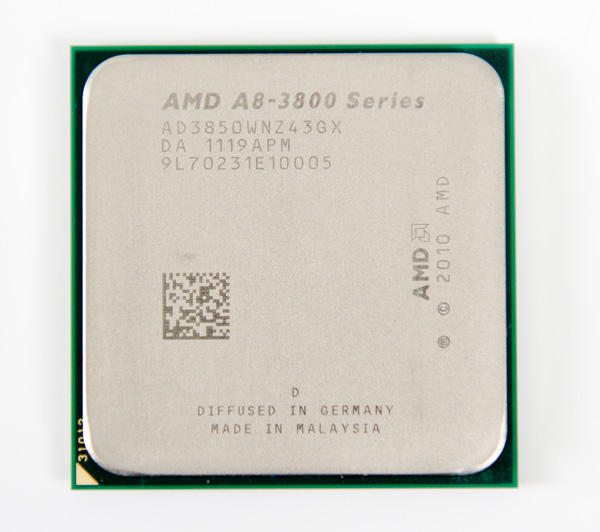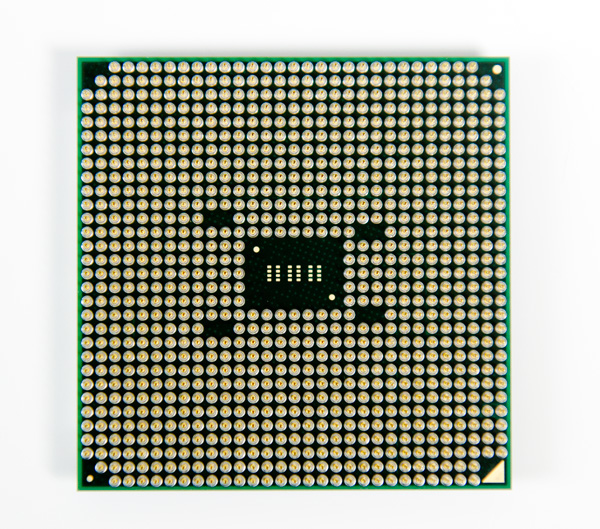The Llano Desktop Preview: AMD A8-3850 CPU & GPU Performance
by Anand Lal Shimpi on June 14, 2011 12:00 AM ESTFinal Words
There are still a number of unanswered questions about Llano on the desktop. In the coming weeks we'll be looking at HTPC performance, power consumption, and hopefully we'll be able to figure out what the deal is with overclocking AMD's new mainstream APUs.
The question of processor graphics performance is open and closed. Llano offers what I'd expect to be the bare minimum from any processor offering a real performance oriented GPU. All of our bench suite is playable on Llano and its actually possible to drive up image quality settings without sacrificing playability. If you're looking to build an entry-level gaming PC, Llano is most likely going to be on your hit list this year.
It took AMD spending half the transistors of Llano on its GPU to deliver the sort of performance we've been asking for from integrated graphics for over a decade; the question I have is whether or not Intel is willing to make a similar sort of move in its architectures.
Ivy Bridge has already been decided upon; it'll be faster but not a significant upheaval in performance. However Intel does have a history of building upon ideas that AMD introduced before their time (e.g. IMC, x86-64, Fusion), and with Llano we may be given a peek at what's to come in the future.












131 Comments
View All Comments
SlyNine - Tuesday, June 14, 2011 - link
And why exactly is that, or do you actually believe that X86 is slows your computer down and uses more power?davegraham - Tuesday, June 14, 2011 - link
milli,AMD was the first in the consumer market to do an IMC. Intel was second.
AMD developed the x86_64 ISA; Intel licensed it from AMD (EMT64; not IA64 which is EPIC/Itanium)
as far as Fusion goes, could be several different aspects to things there...(core fusion, gpu/cpu fusion, etc.). Arguably, AMD announced their GPU/CPU fusion capabilities before Intel did.
cheers,
Dave
Akv - Tuesday, June 14, 2011 - link
Interesting conclusion.However, if you are like me a member of the 0.001% of geek website visitors who use computer for cognitive activities, you will find that gaming performance is not that important.
Sandy Bridge offers more CPU power and totally sufficient IGP for sciences, technology, arts and video. How come you can write that that is not acceptable graphics ?
If you are a roaring swearing illiterate teenager however you will need something stronger - and uglier - in front of your eyes. Like a war game or something.
The more I visit reviews website, the more I wish teenagers would be kept away in their bedrooms, with their gamez and their loudspeakers.
ET - Tuesday, June 14, 2011 - link
I'd love to know what you mean by "cognitive activities" exactly. Gaming certainly includes many such activities, such as perceiving the environment, remembering it, responding to on-screen action, and so on.Even an Atom offers CPU and GPU power that's totally sufficient for "sciences", "technology" and "arts". If by that you mean browsing websites and reading about them. I mean, if you remain on the vague side of definitions there's no particular need to go for a powerful CPU.
And even if you keep teenagers locked up, the majority of gamers happen to be in their twenties and thirties, so that probably won't have as huge an effect as you think.
So your conclusions seem a lot more "interesting" than those of the article.
BernardP - Tuesday, June 14, 2011 - link
CPU performance is as expected, considering it's based on a tweaked Athlon II core. But the positive effects of the tweaks don't show in benchmarks.GPU performance is disappointing: With 400 shaders, expectations were higher than the results shown here. Not even to the level of NVidia's GT 220.
Overall, an adequate and hopefuly cheap APU for basic PC and HTPC.
I'm still waiting to see what Bulldozer can do: No integrated graphics for me.
mczak - Tuesday, June 14, 2011 - link
Keep in mind the ddr3-1333 memory - I bet it scales almost linearly with memory frequency (especially the fastest part here). Intel HD3000 may also only use ddr3-1333 but this is by vendor choice (H67) plus it likely relies a bit less on memory bandwidth (first because it's slower, second because it can use L3 cache). I bet it would easily beat GT220 with faster memory.If you're running ddr3-1333 with desktop Llano, you're either using some old memory you already have, got a prebuilt box where the vendor saved 2$ for 20% performance hit, or are just plain crazy.
whoaaaaaaaa - Tuesday, June 14, 2011 - link
As a PC gamer I love that CPUs are finally getting somewhat respectable integrated graphics.I hope Ivy Bridge continues on what Sandy Bridge did...if it can play TF2, COD, WOW in decent graphics at a decent resolution, PC gaming just got a lot more accessible.
I suspect there has been a quite a few people with crap PCs who have tried to play games but found out they couldn't because of the integrated graphics.
Perhaps this is what Intel and AMD are thinking? They want more gamers on the PC because they buy hardware. Ensuring that everyone on a PC can play games can ultimately get more people to buy higher end graphics cards and processors so they can play in good details.
jabber - Tuesday, June 14, 2011 - link
As I mentioned earlier today, the only games I tend to find on "normal folks" PCs and laptops are the Sims games.Thats pretty much it. In three years of business I've seen a lot of PCs and laptops and so far only about 3-4 of them have been what I would call 'gamers'.
If it can run The Sims/WoW and Farmville and make them look pretty then its mission accomplished.
The other 10% will be using a separate GPU anyway.
Might help the Bitcoin miners though? Every little helps.
SlyNine - Tuesday, June 14, 2011 - link
I say, Most people try a game, find it cannot run and uninstall it.Why would I have a game wasting space ( and in many peoples minds performence even when its not running).
The other 10% use a separate GPU because the IGP cannot handle gaming.
ET - Tuesday, June 14, 2011 - link
True WoW and other MMO's are the most demanding games a casual gamer will run, but it's only with Sandy Bridge and now Llano that integrated graphics were able to satisfy that demand, and even then a little more power won't hurt.